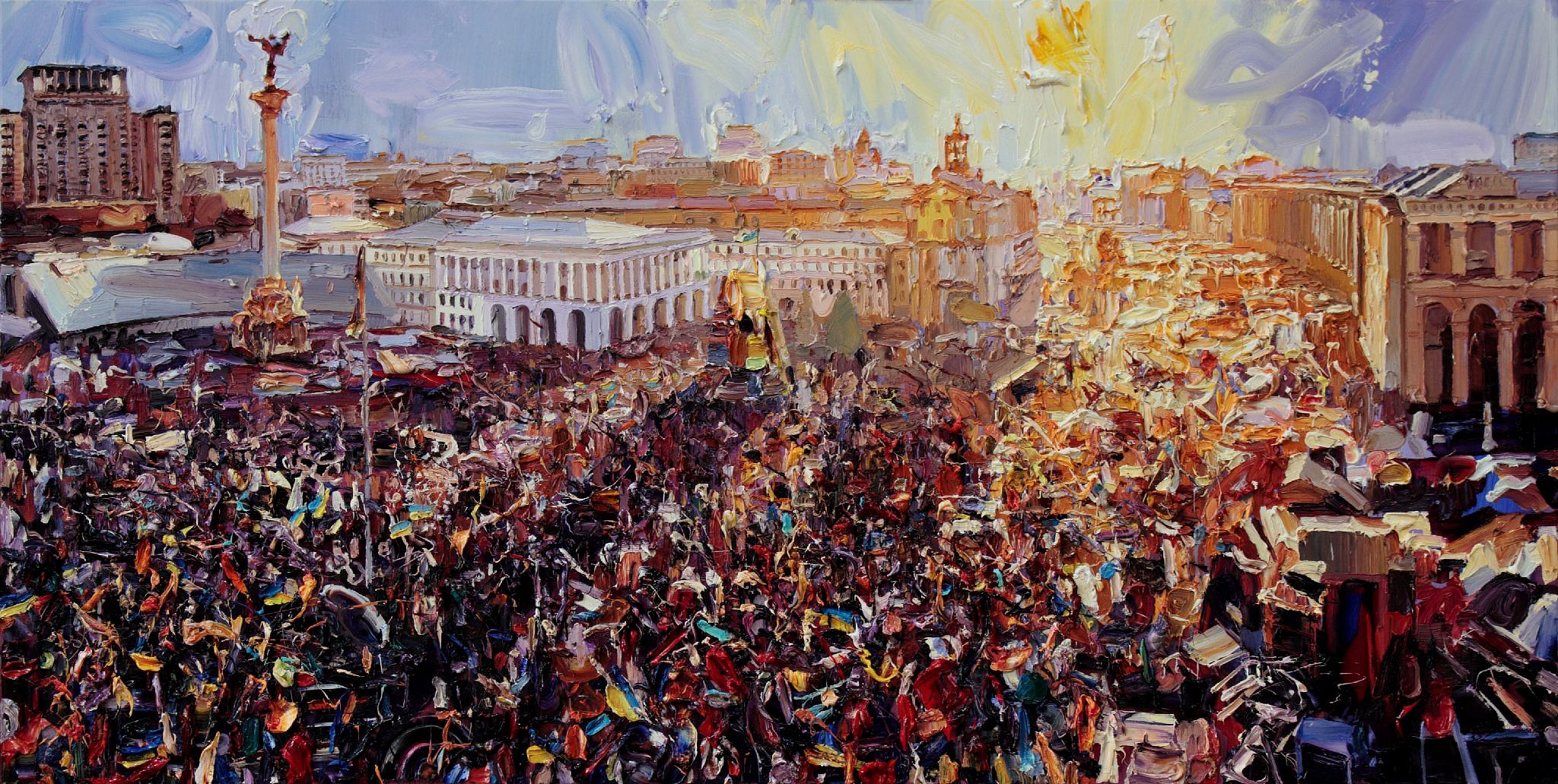PRESS RELEASE

NIGEL MULLINS | Paintings For Jubilant Temporal Ideologies
Apr 5 – May 1, 2024
NIGEL MULLINS | Paintings For Jubilant Temporal Ideologies
5 April - 1 May 2024
VIEW PORTFOLIO | REQUEST PRICELIST | +44 (0) 20 7590 9991
Everard Read London presents a new collection of paintings by South African artist, Nigel Mullins. The exhibition is the artist’s third with the London gallery and brings together three strands of his work in an intertwined and immersive way.
At the heart of the exhibition are two paintings of mass gatherings – the Euromaidan protest in Kyiv and an anti-war protest in the Piazza della Signoria, Florence. “My interest in crowds began in 2014, with a painting of a protest on Alexander Platz in East Berlin, 1989, which was a precursor to the fall of the Berlin Wall,” says Mullins. “I had fixed on the event as an emblem and a talismanic representation of the possibility for positive change. The destruction of the wall was a highly emotive, symbolic event and a significant marker in huge political and social realignments.”
Mullins continues, “In much the same way, I became interested in the Euromaidan revolution - the overthrow of the ethnic Russian suppression of an emergent open democratic Ukraine. Like the fall of the Berlin wall, I saw this as another example of people choosing a new and better future. In 2023, shocked by the invasion of Ukraine, I painted an anti-war protest in Florence (a twin city to Kyiv) to sit with the image of the Euromaidan in this exhibition.”
In this painterly exploration, Mullins makes use of his signature, sumptuous impasto, veering between figuration and abstraction. The paintings capture the images of mass gatherings that characterise our era and convey the turmoil and restlessness of our times. With their aerial views and viscous smears of paint, his powerful canvases afford a soaring, birds-eye view of the jostling mass of humanity below, straining collectively towards a brighter tomorrow.
The second element of the exhibition is a series of Madonna paintings. Mullins applies his paint as libations covering a sacred artefact or an amulet fetishistically. This explicitly references the painting as an object; a support to which meaning is applied often in layers and over an expanse of time.
Mullins notes that, “For some time I have been working with ideas around superstition, with all its shrines and rituals, both as an exploration of human foibles and drives, and as a realm analogous to art and art making. Part of this has been expressed through using the past, its events, objects and personages as a means of reflecting on the present and potential futures. Within the context of this show, the Madonna is presented as a conduit for reflection on distinctly secular, temporal hopes and aspirations in a play on her traditional role of providing comfort in times of difficulty.”
The third facet of the exhibition comprises a suite of abstract works which Mullins perceives to be consoling and energizing structures. “These works are intended, at the simplest level, to activate a positive emotional state on entering the exhibition in a similar way to how stained glass windows in cathedrals may open one up to a state of contemplation,” says Mullins. “They do, however, also work as a positive visual metaphor for human endeavour. The act of compiling a series of colours and marks on a canvas is for me, a minimalist meditation on the nature of human constructs, both physical and social. The paintings, like culture, are the result of the accrual of choices, order, chaos and chance.”
Reflecting on the works created for this new exhibition, Mullins concludes, “Everything is evolutionary, with one thing leading to another in a fractal web of cause and effect. These works are thus hopeful. Their cohesion is born of a patchwork of intentions, damage, rebuilds and changes.”



